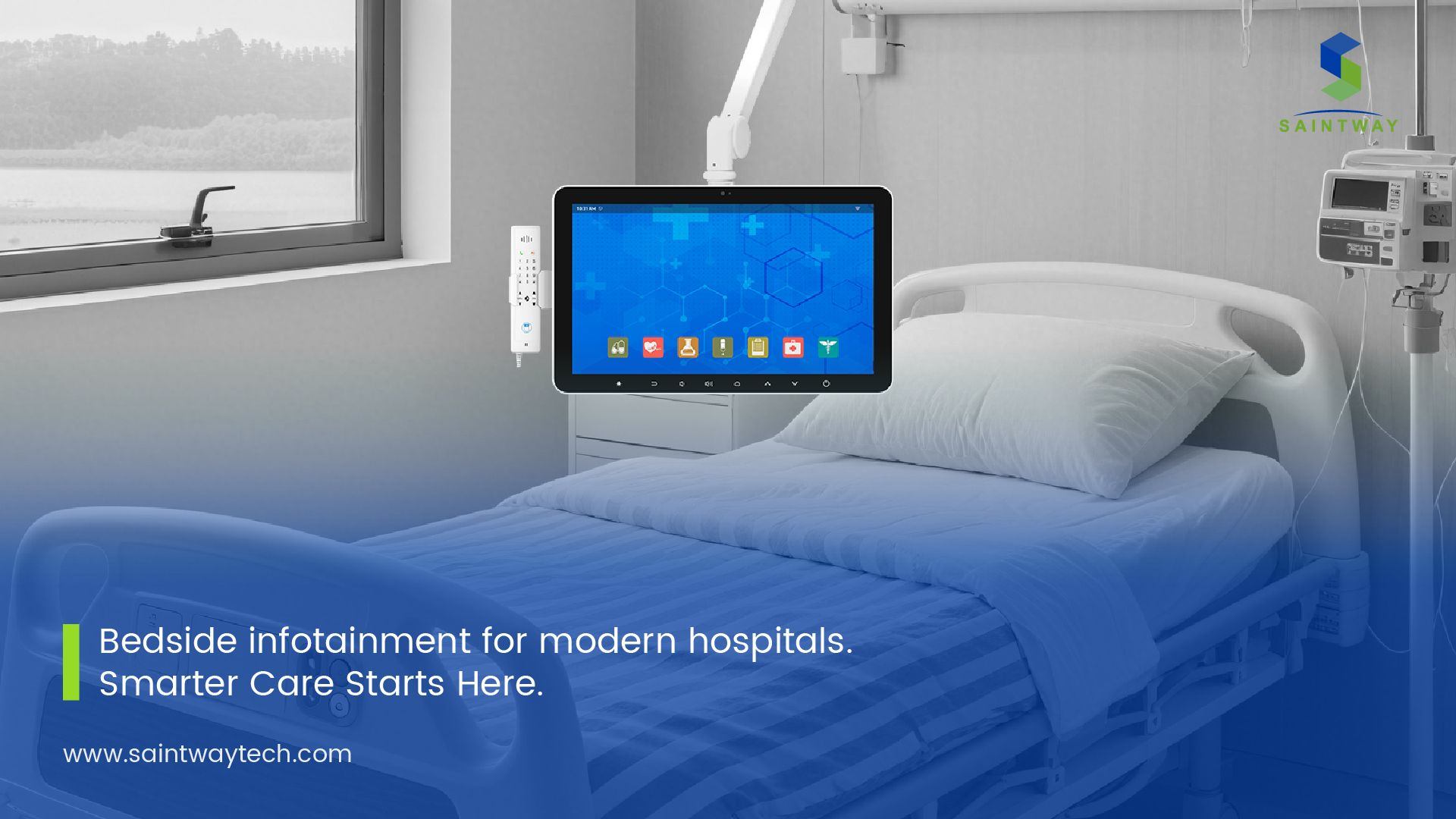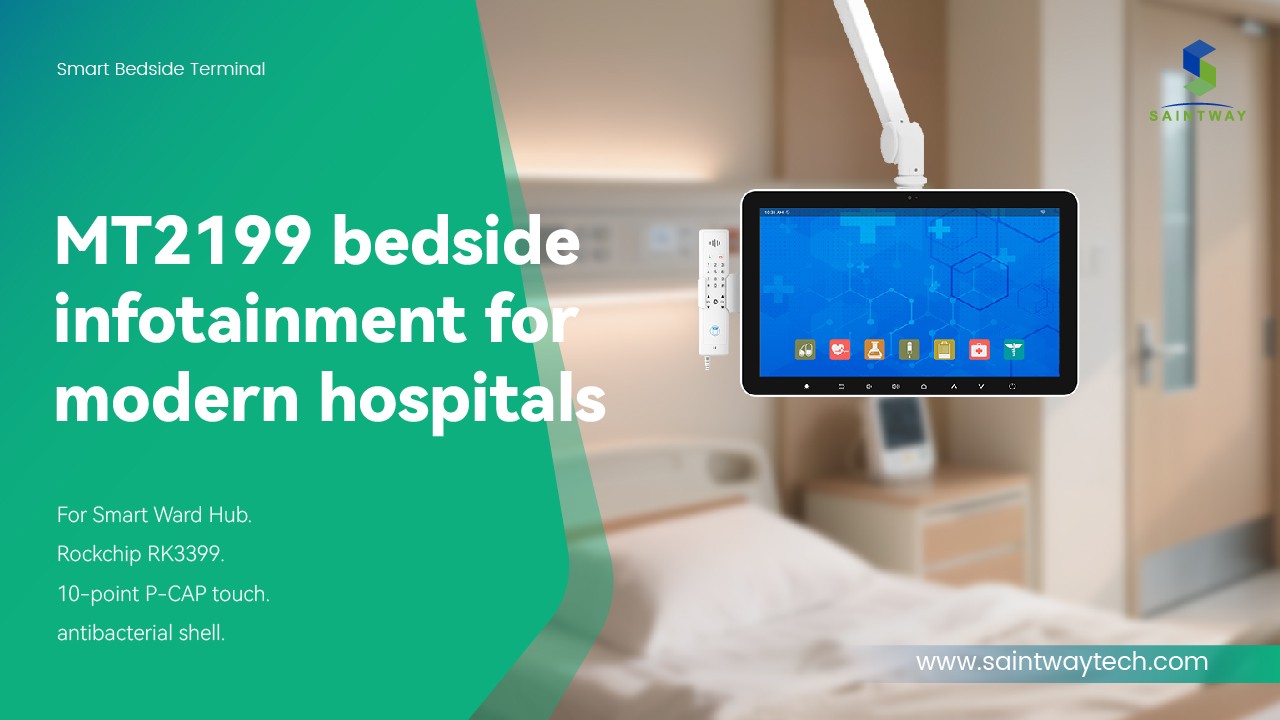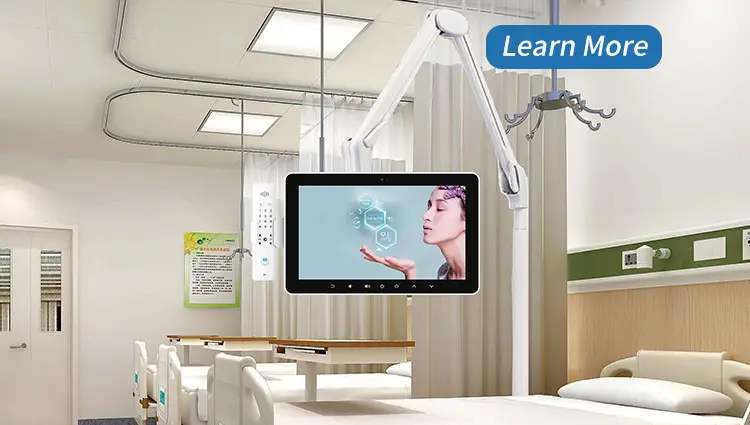Hospital readmissions have long been a critical challenge for healthcare providers worldwide. They not only strain hospital resources but also affect patient outcomes and increase healthcare costs. In recent years, the healthcare industry has been turning to digital transformation to address this issue — and smart terminals are emerging as a key player in the effort to reduce hospital readmissions.

But how exactly do these intelligent devices make a difference? Let’s explore.
Understanding Hospital Readmissions
What Are Hospital Readmissions?
A hospital readmission occurs when a patient who has been discharged returns to the hospital within a short period, often within 30 days. This typically indicates an issue with post-discharge care, inadequate monitoring, or complications that were not addressed early enough.
Common Causes and Risk Factors
- Poor discharge planning
- Lack of follow-up care
- Medication errors or non-adherence
- Chronic disease complications
- Communication gaps between healthcare teams
The Financial and Emotional Toll
For hospitals, high readmission rates can lead to penalties under national health policies. For patients, they mean stress, additional costs, and prolonged recovery. Reducing readmissions, therefore, benefits everyone involved.
The Growing Role of Technology in Healthcare
From electronicThe Growing Role of Technology in Healthcare**
From electronic health records (EHRs) to AI-powered diagnostics, technology is reshaping healthcare delivery. The integration of smart devices and connected systems enables medical staff to make informed, data-driven decisions quickly. This transformation is paving the way for smarter patient management, and smart terminals play a vital role in that ecosystem.
What Are Smart Terminals?
A smart terminal is a specialized computing device designed for medical environments. It allows healthcare professionals to access patient data, monitor vital signs, and communicate across departments securely. Unlike standard hospital PCs, smart terminals are medical-grade, often featuring:
- Antibacterial enclosures
- Waterproof and dustproof designs
- High-resolution touchscreens
- Compatibility with medical software and peripherals
They can be wall-mounted, mobile, or integrated at the patient bedside, depending on their application.
Types of Smart Terminals in Healthcare
Bedside Terminals
Placed near the patient’s bed, these terminals enable doctors, nurses, and patients to access health information easily. Patients can view their treatment schedules, lab results, or even contact nurses directly.
Nurse Station Terminals
Used for monitoring multiple patients at once, managing alerts, and coordinating care efficiently.
Mobile Medical Carts
These terminals can be wheeled around wards, offering flexibility and real-time data access wherever the patient is.
Operating Room Terminals
Designed for sterile environments, these terminals provide surgeons with instant access to imaging data, surgical checklists, and real-time updates.

How Smart Terminals Help Reduce Readmissions
1. Enhancing Patient Monitoring and Follow-Up Care
Smart terminals integrate with monitoring systems and EHRs, ensuring real-time data sharing between healthcare providers. When abnormal vitals are detected, alerts are triggered immediately — allowing staff to act before conditions worsen.
2. Supporting Accurate Diagnosis
Access to real-time lab results and imaging data ensures that doctors make timely and precise diagnoses, reducing treatment errors that could lead to complications or readmissions.
3. Streamlining Communication
Miscommunication is a major cause of hospital errors. Smart terminals bridge this gap by connecting physicians, nurses, and specialists on a single digital platform.
4. Empowering Patients Through Education
At the bedside, terminals can display videos and resources that educate patients on medication use, wound care, and rehabilitation exercises — empowering them to take charge of their recovery.
Improved Patient Monitoring and Data Sharing
Continuous monitoring through smart terminals allows hospitals to track vital signs remotely, both during the hospital stay and after discharge. Integration with cloud systems enables secure data sharing with home care teams or family members, creating a connected care network that minimizes the chance of unnoticed complications.
Facilitating Remote Consultations and Telemedicine
With smart terminals, doctors can conduct virtual rounds or post-discharge consultations through built-in video communication tools. This makes follow-up care more convenient, particularly for elderly or rural patients who struggle to revisit hospitals.
Patient Education and Engagement
Engaged patients are healthier patients. Smart terminals can:
- Display tailored educational materials
- Send medication reminders
- Provide interactive recovery checklists
This not only improves compliance but also reduces preventable readmissions.
Case Studies and Real-World Implementations
Several hospitals have already embraced smart terminal technology. For instance:
- Singapore General Hospital uses bedside terminals for patient engagement and teleconsultations, reporting a noticeable drop in readmission rates.
- European hospitals have implemented nurse station terminals that connect with centralized EHR systems, improving response times and patient satisfaction.
Benefits Beyond Readmission Reduction
- Operational Efficiency: Faster data access and reduced paperwork.
- Better Patient Experience: Empowered patients feel more in control of their recovery.
- Data Security: Medical-grade terminals adhere to strict healthcare standards like HIPAA and GDPR.
Challenges and Limitations
Despite their advantages, hospitals may face:
- Integration challenges with older IT systems
- Training needs for staff adaptation
- Upfront costs, though long-term savings often justify them
The Future of Smart Terminals in Healthcare
The next generation of smart terminals will incorporate AI-powered predictive analytics, enabling hospitals to forecast readmission risks before they occur. With IoT and 5G, data sharing will become faster and more reliable, extending smart healthcare into patients’ homes.
Conclusion
Smart terminals are more than just advanced touchscreens — they are connectivity bridges that unify patient care, streamline hospital operations, and empower both clinicians and patients. While no single technology can eliminate readmissions entirely, smart terminals undeniably move healthcare closer to that goal.
FAQs
1. How do smart terminals differ from regular medical computers?
Smart terminals are purpose-built for healthcare, with features like infection control design, patient-friendly interfaces, and integration with medical systems.
2. Can smart terminals integrate with EHR systems?
Yes, modern smart terminals seamlessly connect with EHRs and other hospital management systems.
3. Are smart terminals suitable for all hospital departments?
Absolutely. They are adaptable for ICUs, operating rooms, nurse stations, and even administrative areas.
4. How do smart terminals support patient education?
They offer interactive educational modules, medication guidance, and post-discharge care instructions directly on-screen.
5. What’s the future outlook for smart terminal technology in healthcare?
Expect wider AI integration, enhanced mobility, and expansion into home-based care systems.


